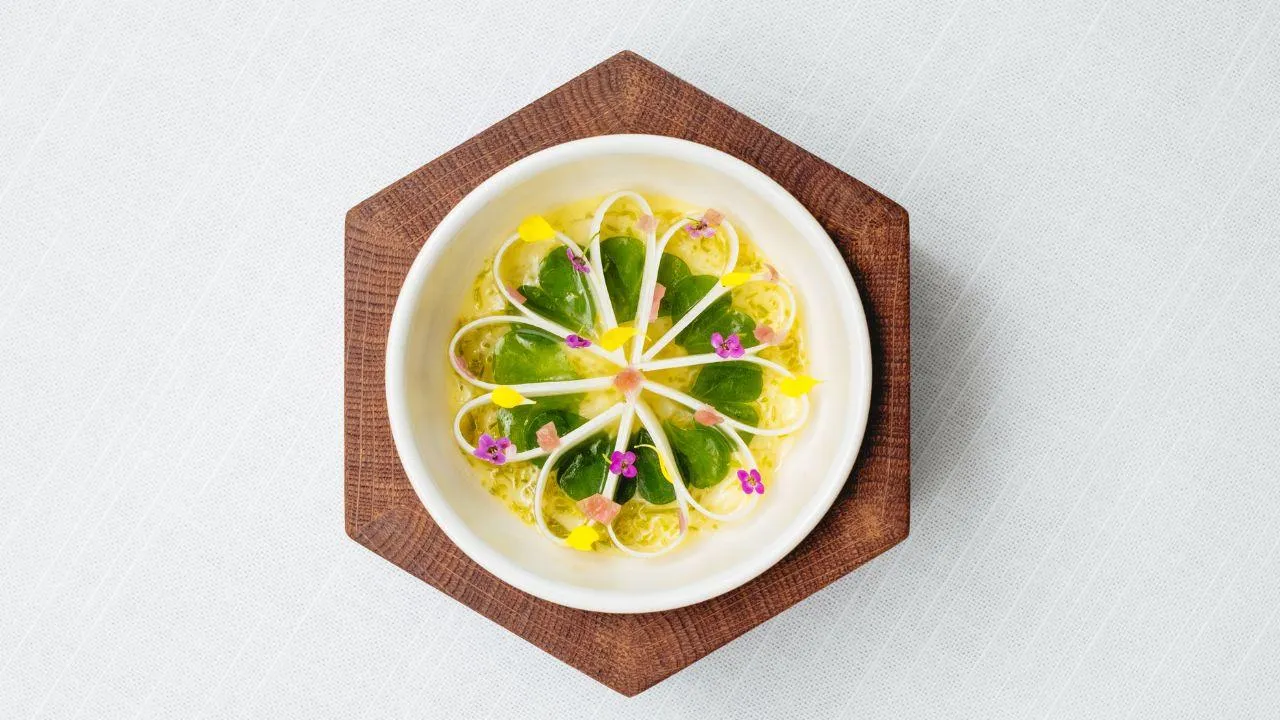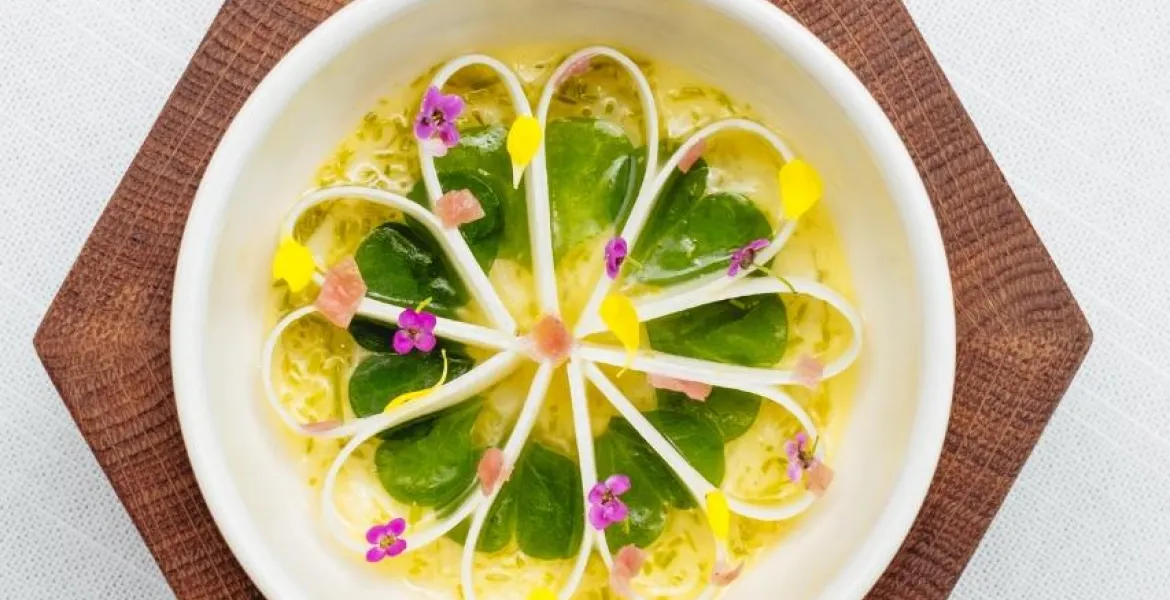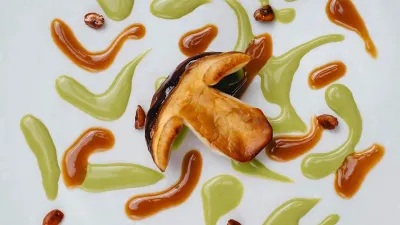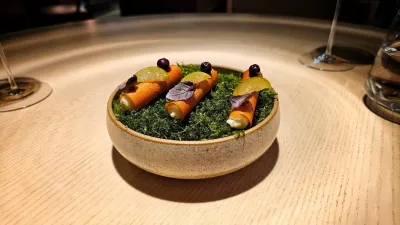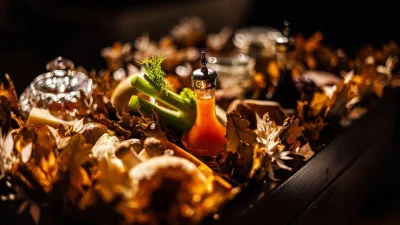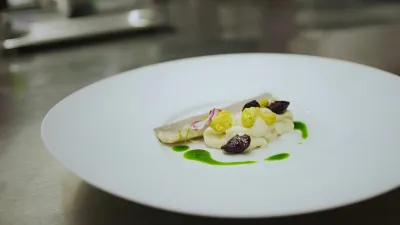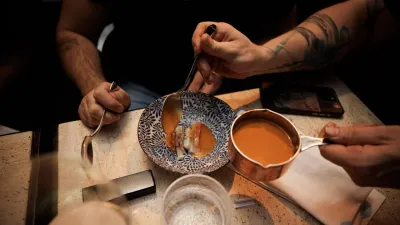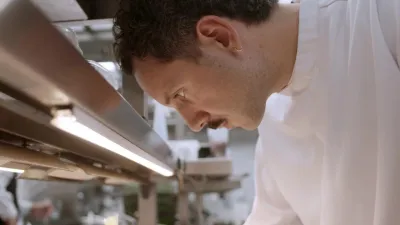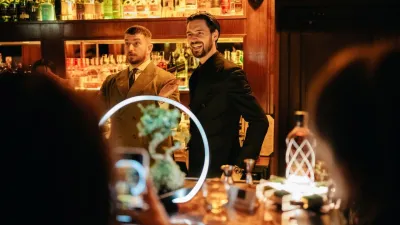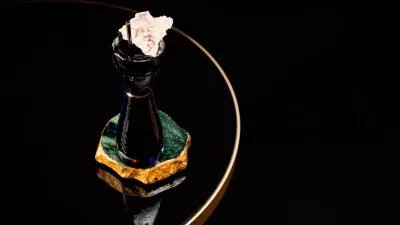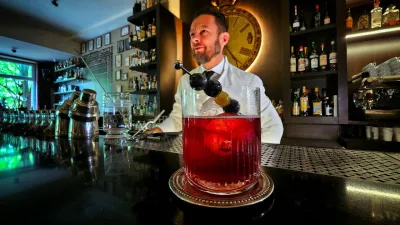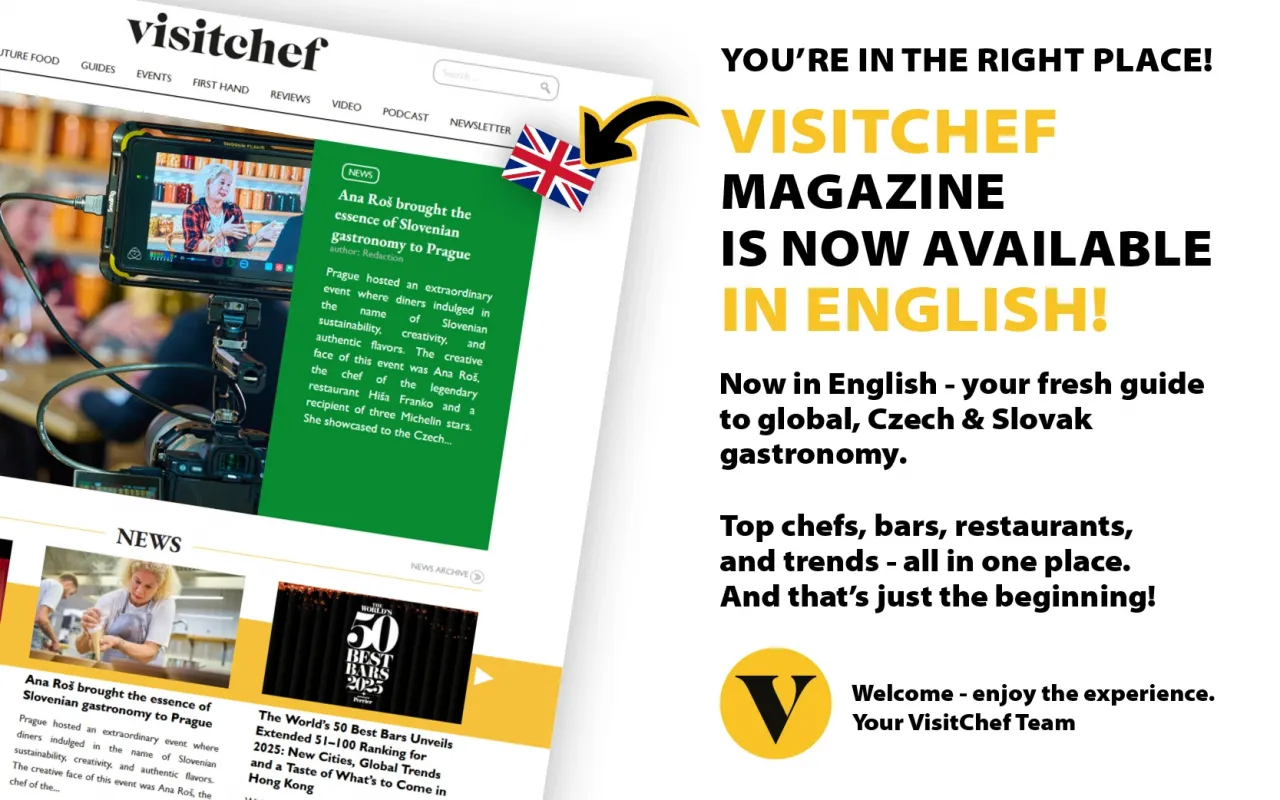Few businesses in Slovakia attract as much attention as ECK pod Devínem, a project that seamlessly combines architecture, farming, wine, and culinary philosophy into a cohesive entity. This report highlights a place already seen as a potential future Michelin star holder.
At the foot of Devín, just a few kilometres from Bratislava, stands what is arguably the best restaurant in Slovakia today. ECK is a project that has earned 18 out of 20 points and four chef's caps in the Gault&Millau guide, marking the highest rating ever achieved in the country. It is also considered Slovakia's most serious candidate for a Michelin star, pending the guide's arrival in the region.
The concept is the brainchild of Daniel Tilinger, the chef, author, and architect of the whole idea. ECK is not just a restaurant; it is a project that blends architecture, nature, and culinary craft in perfect harmony. The wine cellar, curated by sommelier Peter Lunter, also leaves a remarkable impression, offering real gems and rare bottles.
The building is nestled in the tranquil Devon countryside, surrounded by vineyards and forests. The architecture integrates concrete, wood, and glass, creating an austere yet impressively precise structure. Each detail is meticulously placed. The walls are adorned with works by contemporary Slovak artists, which complement rather than disturb the atmosphere.
The open kitchen is a focal point, allowing guests to observe the chefs at work. The grill plays a crucial role here, imparting an authentic, slightly smoky dimension typical of Tilinger's style to the dishes.
Opening Salute: Precision in Detail
The evening begins with a glass of Krug 172 champagne - an elegant and refined choice that sets the tone for the entire experience. The first service includes a set of canapés, small but meticulously crafted.
The first canapé appears unassuming: a warm ball of lángos filled with smoked trout and caramelized milk purée. It is topped with feta mayonnaise and shavings of aged sheep's cheese from the Gemer region - a combination of flavors that melds tradition with modern technique.
Another miniature features rehydrated beetroot coated with a paste of fermented blackcurrants - bold, acidic, with a subtle smoky note. Accompanying it is a small cupcake with dill sauce - a tribute to a Slovak classic in a novel rendition. Inside is grilled beef tongue, topped with sour apple and fresh dill. Familiar flavors, presented in an unexpected form.
On the accompanying plate is pickled white radish in apple juice with a spherical pearl of chamomile and mustard - a detail that beautifully completes the opening service.
This is followed by brioche with a yeast sprinkle and a duo of butters from ECK's own farm. The butter, made from the milk of Jersey cows known for their high-fat content, has an unusual richness. One is pure and lightly salted, while the other is infused with yeast and hazelnuts. This simplicity reveals ECK's philosophy: a return to essence, craft, and genuine taste.
The Power is in the Subtlety
From the very first moment, the tasting at ECK is revealed as a meticulously planned whole. It's not just about the food but about the harmony of flavors, textures, and moods. Equally important is the non-alcoholic pairing, crafted with precision and respect.
The initial pear juice, cooked with dried lime blossom, has a softly syrupy, velvety texture, thanks to natural polysaccharides. It is served without ice to preserve its smoothness. The taste is slightly honeyed, with a floral note - calm and balanced.
The wine pairings begin with Pierre Morey's 2022 Aligoté Burgundy - a wine with a mineral structure, a fresh citrus profile, and understated elegance.
The first dish of the evening is royal porcini mushroom. It is served cold, accompanied by a delicate cream made from the mushroom cap, and a steamed leg sliced to retain both structure and meatiness. The onion consommé combines sweetness, umami, and a light herbal acidity. Lemon verbena, chives, and crisp chips made from mushroom trimmings add freshness and texture to the dish.
The flavors balance woodsy earthiness with citrus freshness. The pear juice softens it, while the Aligoté enlivens it - a perfect interplay. This dish epitomizes Tilinger's philosophy: perfection lies in simplicity.
The Grill Plays a Major Role
The next course returns to the open fire, the heart of ECK's cuisine. The grilled carrots here are no ordinary vegetables; they symbolize the restaurant's entire philosophy: working with simplicity while giving it a complex dimension. "We do the carrots on our open fire," explains Peter Lunter as he pours the wine. "It's brushed with a paste of fermented vegetables - that gives it depth and a smoky note. We tried to choose something that complements it beautifully," he adds.
The glass features Valenciso Rioja Blanco 2023, a white Rioja that is a rarity in itself. "It's a wine with a creamy and elegant expression, slightly nutty, with a touch of cream - it will be perfect with the carrot," the sommelier concludes. And he's right.
On the plate are carrots marinated for twelve hours in a paste of fermented vegetables, then grilled and lightly cured. A frothy hollandaise sauce spills around, mixing apricot sweetness, carrot juice, mushrooms, and sea buckthorn - a combination that brings surprising depth and freshness.
Crispy chicken skin chips are laid on top, adding a subtle contrast and echo of the fire from the grill.
The non-alcoholic pairing is equally thoughtful: peach juice infused with juniper and flavored with tomato. The drink is lightly fruity, with a refreshing finish and notes that echo the woodiness and smoky line of the dish. It is a dialogue between sweetness, smoke, and fermentation, between heat and acidity. This plate embodies the essence of ECK: precision, respect for the raw material, and humility towards the fire that unites everything.
The Elegance of Fire and Water
As the dinner transitions to the fish course, the atmosphere in the room shifts slightly. The open kitchen plays with warm light and the scent of wood, heralding the arrival of sturgeon from the Stupava fishery, grilled with clockwork precision. Before reaching the plate, it is rubbed with barley malt extract, imparting a subtle caramel note and light sweetness to the meat. The surface of the fish glistens with a thin glaze, while the interior remains supple and tender. Underneath lies a grilled Tuscan kale leaf, adding earthiness and bittersweet depth.
On the plate, the fish is bathed in tomato water flavored with basil and fig oil, combining marine purity with fruity freshness. Dried and fresh tomatoes add a play of textures and colors. "This is the most interesting pairing of the evening for me personally," says the sommelier as he pours into the glasses. The wine featured is Nikolaihof Riesling Federspiel Late Release 2016 from Wachau, Austria.
"Riesling is usually drunk young," he continues, "but this winery deliberately handles it differently. They let the wine age for six years in used barrels, so it has a completely different structure and depth. You'll find petrol, peaches, apricots, complexity... and yet only twelve percent alcohol. It's a wonderful combination with the slightly stunted sturgeon," says the sommelier.
Indeed, the mineral note of the Riesling emphasizes the smokiness of the fish, while the fruity layers bring lightness and harmony to the palate. The flavors develop slowly, with a long, clean finish.
The non-alcoholic pairing here is equally refined. Pear and spinach juice infused with lemon thyme is topped up in front of guests with a local water kefir-based ferment, also flavored with thyme and lemon. The drink has a lively, slightly fizzy character, herbal freshness, and a slightly tart finish that lightens and balances the fish course.
The result is a dish with perfect balance - between fire and water, sweetness and acidity, heat and minerality. This is the moment when Tilinger's signature shines: a cuisine that is precise, technical, and yet deeply poetic. It is undoubtedly one of the evening's highlights.
Following the fish course, the ECK kitchen becomes quiet and focused. A plate appears on the table exuding the aromas of fire and meat—a beef roll from a roast beef farm in Pavlice, Slovakia. The meat is sliced thin like carpaccio, briefly browned on one side, then rolled with fresh chives inside. The surface is lightly caramelized, browned on the outside, and pink on the inside - precise temperature work that requires both confidence and instinct. The roll is accompanied by roasted chard, grilled white cabbage, and crispy beef cracklings, which add texture and juiciness to the dish. Finally, a reduced sauce of fermented and grilled tomatoes arrives, thick and bold, with a deep umami note and a smoky finish. Just a few crystals of Maldon salt on the surface enhance the flavor and allow the meat to stand out.
"It's a Malbec with a completely different character than you might expect," explains the sommelier with a smile. "It's aged in concrete and amphorae, and it's only 12.5% alcohol, so it's juicy, fruity, and very drinkable. The winery's goal was to show that Malbec can be playful, not heavy." And it works perfectly. The wine is fresh, with notes of plum, red currant, and subtle minerality that beautifully complement the acidity of the fermented tomatoes in reduction. Each sip seems to cleanse the palate and reveal new layers of flavors.
Guests around the table exchange nods and quiet smiles. The breadth of ingredients they're able to find and combine is impressive. These are combinations you wouldn't often think of -and that's the magic of it. You don't often see such playfulness and confidence elsewhere.
The beef roll becomes more than just a meat course. It signifies confidence that creativity here is not based on effects, but on a deep understanding of the raw material—and the courage to unite what normally remains separate.
Chicken from the Fire
The fire crackles on the open grill, a signature element for ECK. From its heat comes the main course of the tasting - grilled chicken, perhaps the best Slovakian chicken, according to chef Daniel Tilinger. The meat has a delicate, smoke-infused aroma and a perfectly tender texture.
"This is our smoked chicken," Tilinger smiles as he presents the plate. "The yellow purée is corn, flavored with lemon verbena. The green leaf is chard, and we have roasted oak mushrooms to accompany it." Flavor-wise, the dish is unusually harmonious - the sweetness of the corn, the light citrus line of the verbena, and the earthiness of the mushrooms combine to create a layered, long aftertaste that is accentuated by smoke at the end. The grill here is not just a heat source but a language the kitchen uses to tell a story.
It is accompanied by a 2016 Merlot Amandum from Friuli-Venezia Giulia - a wine created by a former lawyer who decided to leave his profession and dedicate his life to wine. "It was a struggle," the sommelier admits, explaining the pairing. "The white wine was completely overshadowed by the smoke, so we opted for something older, red, but elegant. The 2016 Merlot was a cool vintage - it has notes of dark fruit, tobacco, and spice, but no tannins." The wine gives a ripe impression, with depth yet remains smooth. Notes of plums and dried cherries blend beautifully with the smoke from the grill, while the subtle acidity cleanses the palate and leaves room for the buttery texture of the chicken.
Meanwhile, the staff introduces a new dish - warm brioche. We are the second guests in ECK's history to have the opportunity to taste it. It's perfect. Crispy and slightly crunchy on the outside, soft, almost melting inside. ECK brioche is a triumph. A small detail that makes the entire dish feel even more homely and comforting.
The non-alcoholic pairing is more complex with the chicken, thought out in several layers. Grape base with basil, elderflower, and hop foam on top. "Last time you had blueberry with nectarine and sage," the sommelier reminds us, "here we move into darker, more herbal notes that work with the smoke and bitterness." Indeed, the drink is not sweet, rather playful, with a bitter-sour line that beautifully complements the subtle smokiness of the chicken.
A Cheesy Homage to France, with a Heart from Devín
After the main course comes the cheese trolley, which at ECK is more than just an accompaniment. "Of course, it's not just our cheeses here," the waitress states with natural refinement. "The smaller ones in the front are from ECK's farm, but otherwise we focus mainly on France. Sometimes we'll add something interesting from Europe - like a blue cheese from Scotland or a hard Spanish cheese." Of the domestic production, the Devín camembert is noteworthy - more delicate than the French version, with a young, clean profile. This is followed by goat's cheese with white mold, creamy and slightly salty, and then crottin, which is aged for three to four weeks. It has a texture reminiscent of fresh curd and a delicate, slightly salty taste. In addition to the Slovak cheeses, there is a selection of classic French blue cheeses - Fourme d'Ambert, creamy and smooth, Roquefort with its savory, long aftertaste, and finally Scottish cow's blue cheese, drier and more crumbly, contrasting with the smoothness of the previous cheeses. The entire selection is served with fresh bread, fruit reductions, and local honey - details that conclude the evening with lightness and elegance.
Cherries, Tongue, Humor, and Exceptional Desserts
At ECK, lightness is never forgotten at the end of the evening. It's also about perspective. From the kitchen comes a pre-dessert inspired by the sculpture "Cherry from Mr. Lotar" that stands in the restaurant's hallway. "This is kind of our game," the waiter smiles as he brings out a plate with a dark red motif. At first glance, it looks like a small art object - a cherry-shaped red gel applied in a thin layer to white porcelain.
"We recommend using your tongue," he adds with amusement. "Whoever has a clean plate gets dessert as a reward." The sweet and sour taste of the cherry juice immediately awakens the taste buds, refreshes the palate, and erases any salty impressions from previous courses. It's a moment of playfulness that carries both humor and a deep understanding of the rhythm of a tasting dinner - exactly the kind of idea that makes ECK a world-class establishment. The Philipponat Royale Réserve Brut Champagne glistens in the glass, mineral, with a subtle creaminess and citrus energy. It's a wine that suits the cherry acidity perfectly - sparkling, clean, elegant.
After a playful introduction, dessert follows the philosophy of the entire restaurant: simple ingredients, deep work with texture and fermentation. Fresh goat's yogurt is sourced from a farm below Devín, used to make a light, cooling granita - the top layer of the dessert. Underneath is a yolk cream patissière, soft and buttery, topped with caramelized yeast adding an unexpected nutty line. At the bottom are fermented blueberries and their thick jam, which combine all the flavors into one harmonious whole. The texture changes with every spoonful - from icy granita dust to smooth cream, from milky freshness to dark fruity notes. The dessert is not sweet but naturally balanced - it tastes of the land it comes from.
...and the Last Gesture
Coffee arrives with a tray resembling cut glass. On it rest little gems - a pumpkin seed praline with salted caramel, coated in 54% dark chocolate, with a slice of edible silver on top. Next to it lies the financier - a tiny almond cake with butter and sugar, decorated with salko cream, young spruce shoots, and a tiny pine cone ball. A finish that tastes like a symbol of the whole evening: local ingredients, precise technique, and imagination that crosses borders.
When you walk out of ECK after four hours, everything around you seems quieter. The woods smell of smoke from the grill, and you can hear the Devín in the distance. A place that looks austere on the outside transforms you on the inside - not just by what you've eaten, but by how you start thinking about food.
ECK is not just the best restaurant in Slovakia today. It is proof that honesty, discipline, and localism can become the language of world gastronomy. And that even under Devín, one can cook with such depth that the entire region will speak of it.


